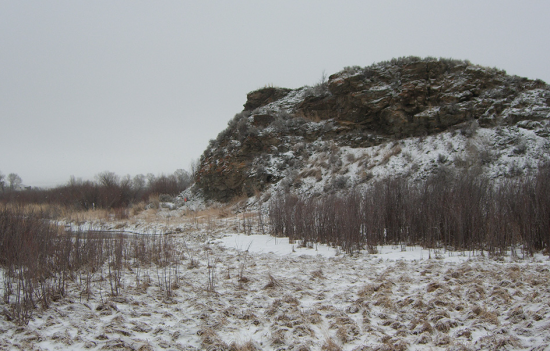Mike Nace
Source - http://bionews-tx.com/news/2014/02/12/texas-genomics-study-ancient-skeleton-reveals-first-americans-came-asia/
A series of compelling archaeological discoveries by Texas A&Mresearchers published on BioNews Texas in November of 2013 on the discovery of a Siberian boy’s 24,000-Year-Old Skeleton Genome and of curious Spear Points unearthed in Alaska gave rise to new debates on the European origins of Native Americans, as well as the timing of human arrival in North America. Now, according to a late-breaking news release from Texas A&M, yet another key discovery has been made that will once again ignite debate and intrigue over the arc of human migration from Asia to North America.
The news comes as a result of the completion of the first genome sequencing by a research team that included Dr. Michael Waters, Director of the Center for the Study of First Americans at Texas A&M, which was recently published in the current issue of Nature magazine. The new research reveals that the genomic sequencing of the ancient skeletal remains of a 1-year-old boy dating from the Ice Age have given researchers what they believe is definitive proof that early human settlers in North America — who in turn are the direct ancestors of modern-day Native Americans — were in fact from Asia, and not of European decent, as previously argued.
The skeletal remains of the so-called “Clovis child,” which were discovered near a rock cliff in central Montana back in 1968 along with a multitude of supporting burial artifacts, such as spear points and antler tools, date back 12,600 years, making them the oldest skeletal remains of their kind to be fully sequenced by scientists. Clovis and the site, now known as the Anzick site after those who made the initial discovery and who own the land where the artifacts were retrieved, are part of the earliest burial site ever found in North America, which has given scientists such as Dr. Waters a unique insight into the ancestry of Native Americans on the North American continent.
For the past several years, Waters and the team involved in the research have been given access to the remains in order to perform genomic testing. the results have finally yielded compelling results. “We were able to extract DNA from the bones and show that the ancestors of this boy originated from Asia,” Waters explained. ”These people eventually migrated to North America, settled the continent, and gave rise to Clovis.”

Texas A&M photo of the discovery site in Montana
The testing, along with the preponderance of evidence recovered from the dig site, have led researchers to reach this conclusive with certainty. According to a Texas A&M press release, ” . . . the skeleton and burial artifacts were covered with red ochre, a type of mineral. The ochre was powdered and used in the burial ceremony. Ochre was often used in prehistoric times as a pigment and in burials” — circumstantial evidence that the genetic conclusions are in sync with the artifacts. Additionally, archaeologists know that Clovis people crafted their stone spear tips in a particular manner, giving them grooved, fluted bases that is referred to as the “Clovis point.” Examples of the stone Clovis point weapon has been found in Texas and throughout the United States and northern Mexico, which date from 13,000 to 12,600 years ago.
Dr. Waters noted the significance of having genomics data to back up archaeological findings: “It is gratifying to see the genetic evidence meshing with the archaeological evidence. These two methods together will tell the story of the earliest settlers of the Americas.”
However, this new finding is not the end of the project for those researchers seeking to accurately piece together the long, complex migration that led humans to North America. The trek, Water adds, is one that ultimately begins as far back as the origins of Man in Africa: “The genetic information provided by the Anzick boy is also part of the larger story of modern humans. We know that modern humans originated in Africa and then around 50,000 years ago spread rapidly over Europe and Asia. The last continent explored and settled by modern humans were the Americas. In essence, the Anzick boy tells us about the epic journey of our species.”
As for the Clovis boy, his remains will be properly reburied in Montana by spiritual leaders of the Crow Tribe, in accordance with Native rituals. Dr. Waters concluded by noting that, “We hope that this study leads to more cooperation between Native Americans and scientists. This is just one human genome. We need to know the genetic story of modern Native peoples and derive more genetic data from ancient remains to fully understand the origins and movements of the First Americans and their descendants,” all of which will contribute to a clearer, more compelling image of human history through the ages.
VIDEO = http://www.youtube.com/watch?v=uRg2Q5lpoR0